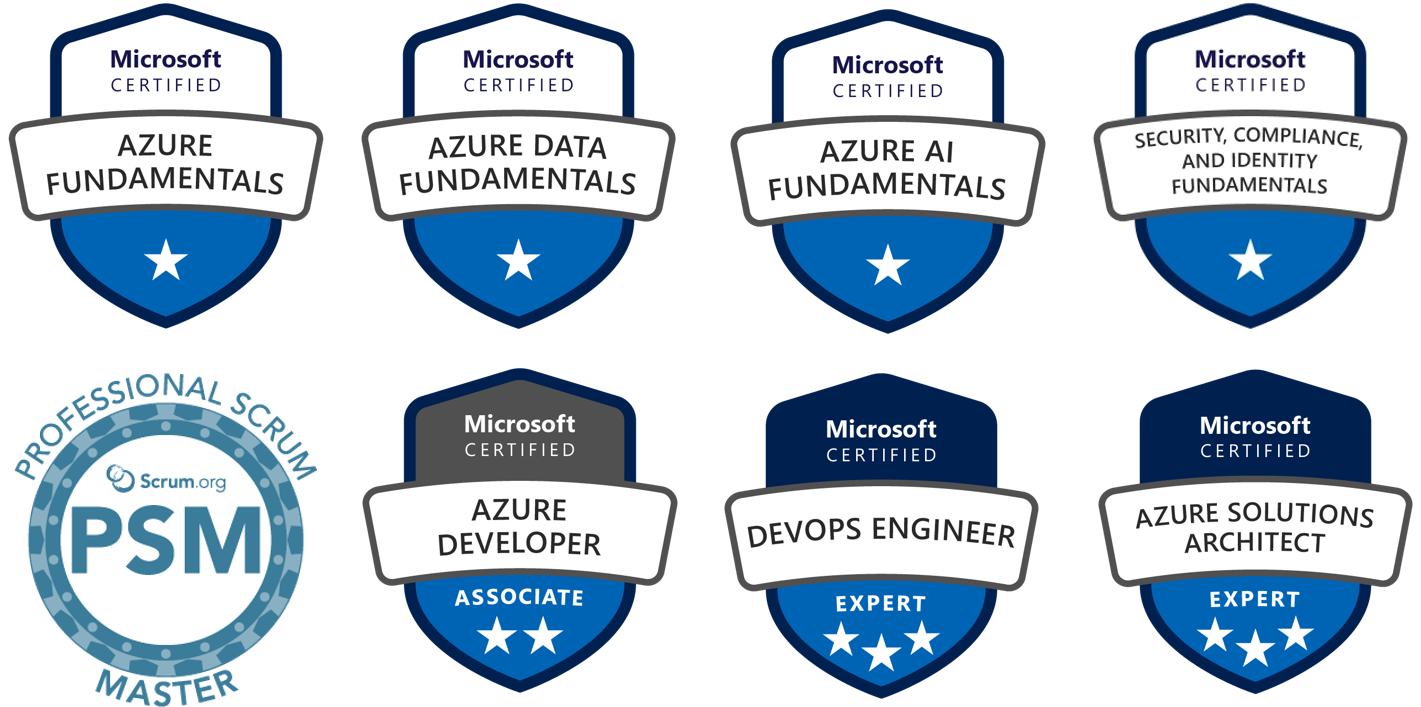Blog
Entries
Home /Blog/ Service Connection
/ Setting Up an ARM
Service Connection : manual implementation
Setting Up an ARM Service Connection for Azure DevOps with Workload Identity Federation : manual implemetation
Posted 01 January 2024
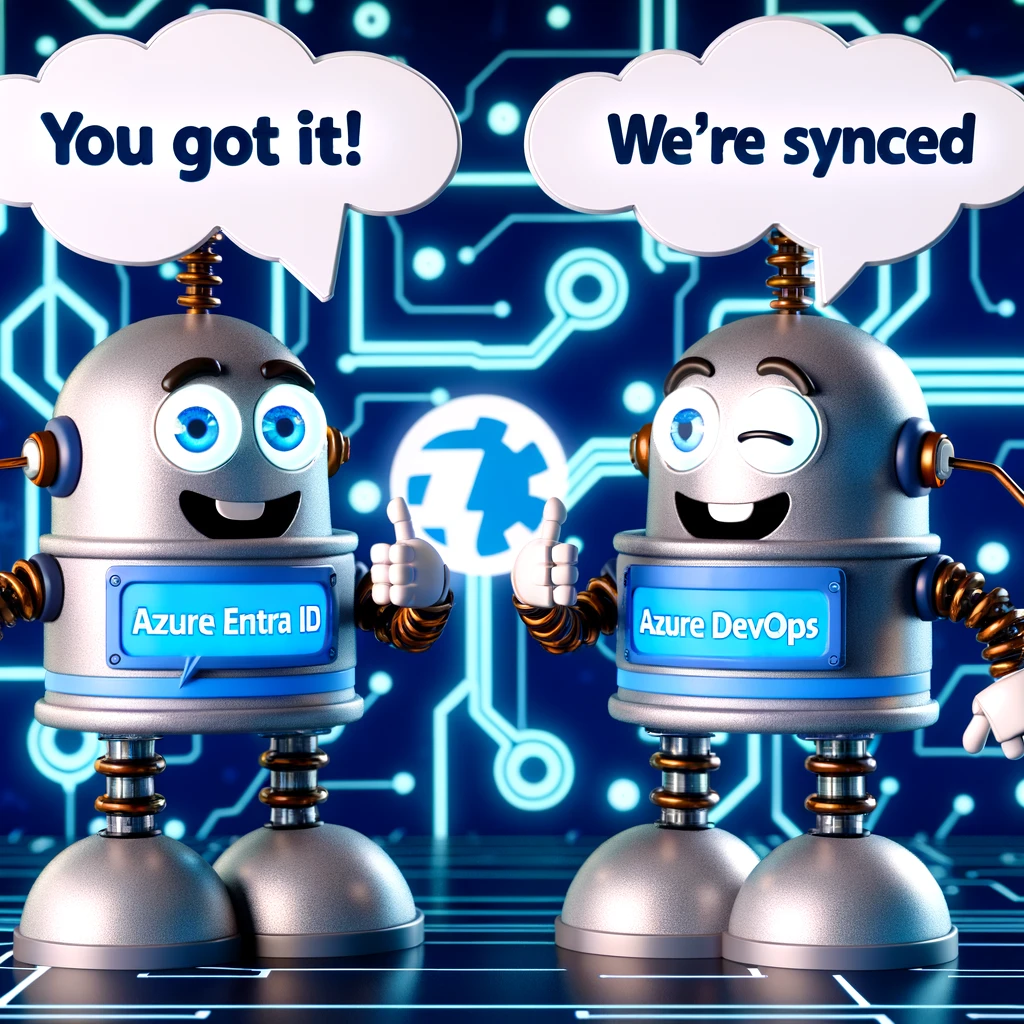
By Ramy RZEM
8 min read
Implementation manual Workload Identity Federation 🔐
Choosing this feature is recommended if you do not have enough
permissions on Azure to manage app registration.
You can have a look on my previous post if you are interested in automatic implementation of service connection.
Prerequisites
Before you start, ensure you have the following:
- An Azure subscription and Azure Entra Id permissions.
- An Azure DevOps organization.
- Federation feature activated on Azure DevOps organization.
- The necessary permissions to create service connections in Azure DevOps.
- An Azure subscription access with the required permissions to configure identity federation.
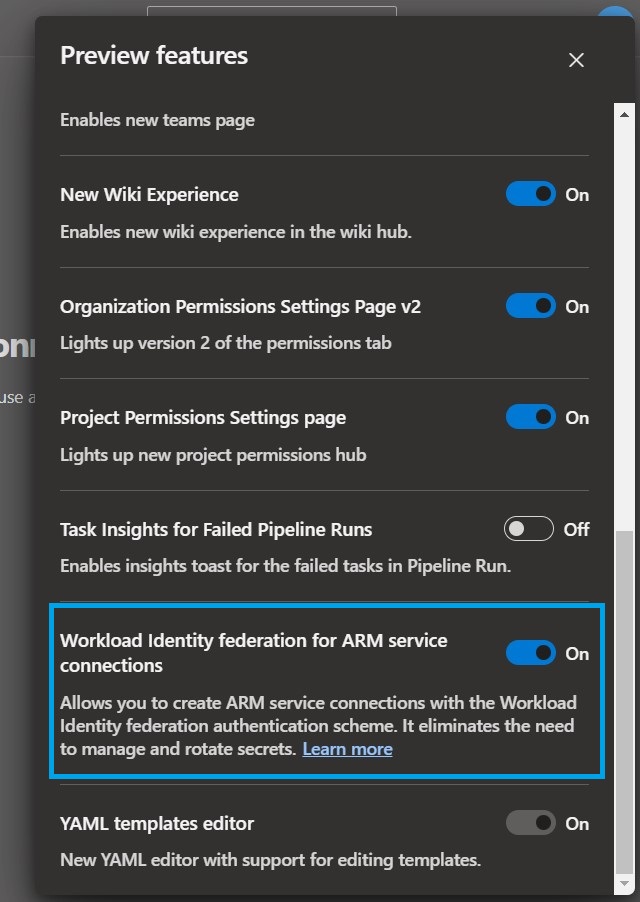
New service connection
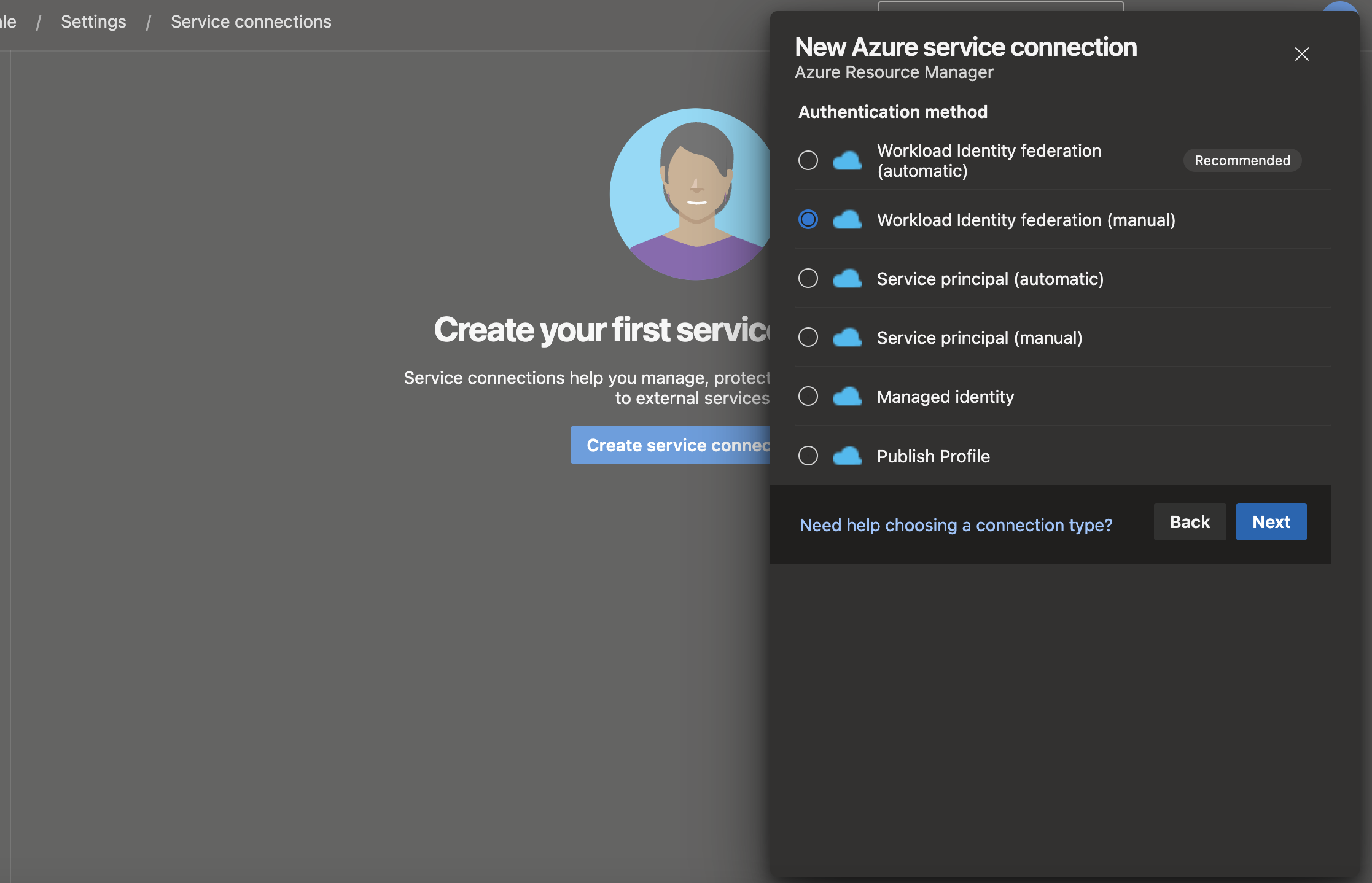
First thing is to go through Azure DevOps organisation/project/service connections/ Create service connection (manual). Then select the manual Workload Identity federation
Fill the needed inforamtion
STEP 1 : BASICS To do so, we will need to handle too parts, Azure DevOps and Azure. We will suppose you don't have access to Azure and you asked to create the service principale and Federation for you to be used on Azure DevOps.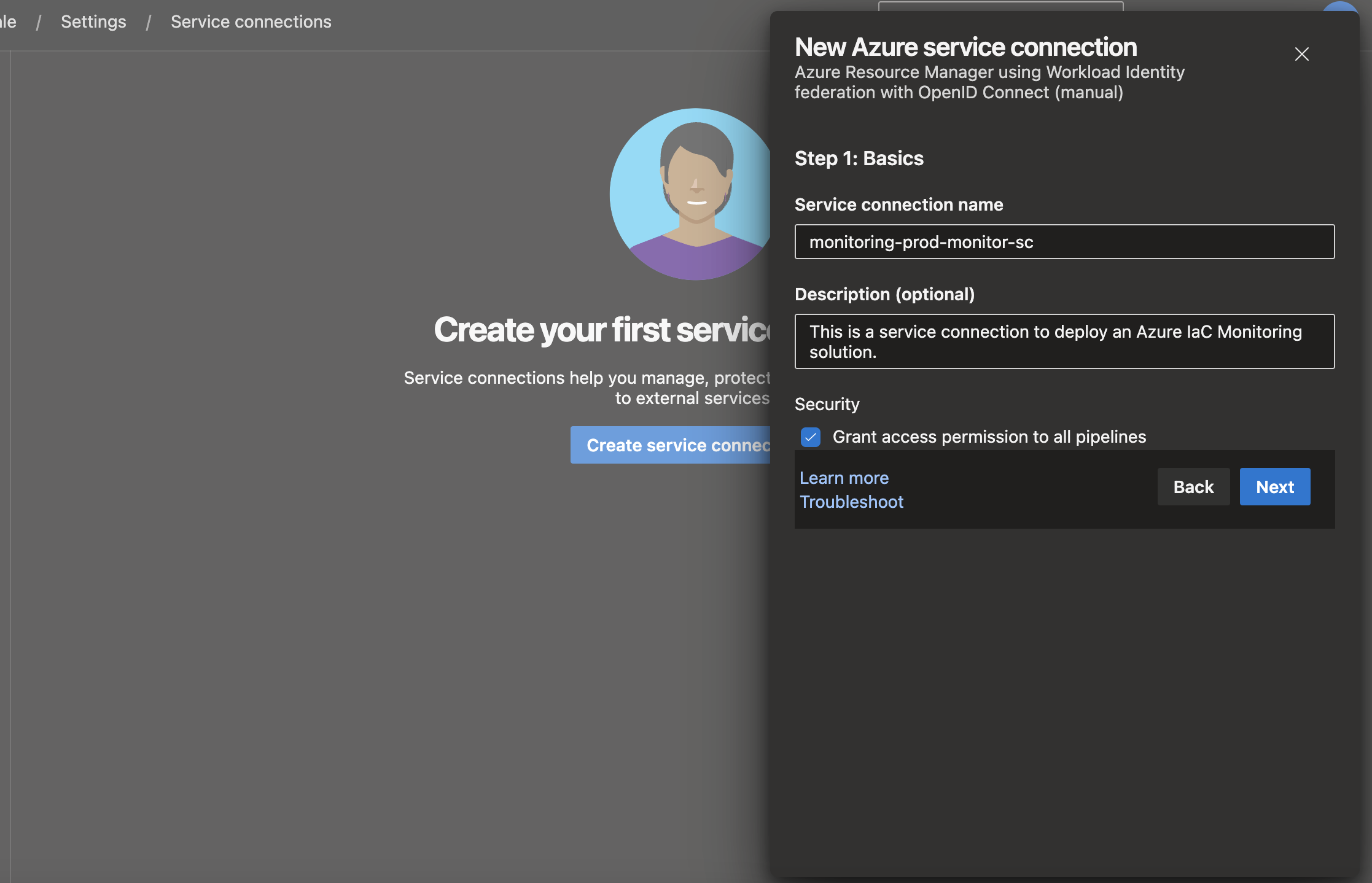
- Service Connection Name: You can put the name of you service-connection, depends on your name convention, it could have this kind of pattern : ProjetName-Environnement-TypeService-SC
- Description: It's optional bu setting a description good for better visiblity which describe what the service connection is about on the quick review.
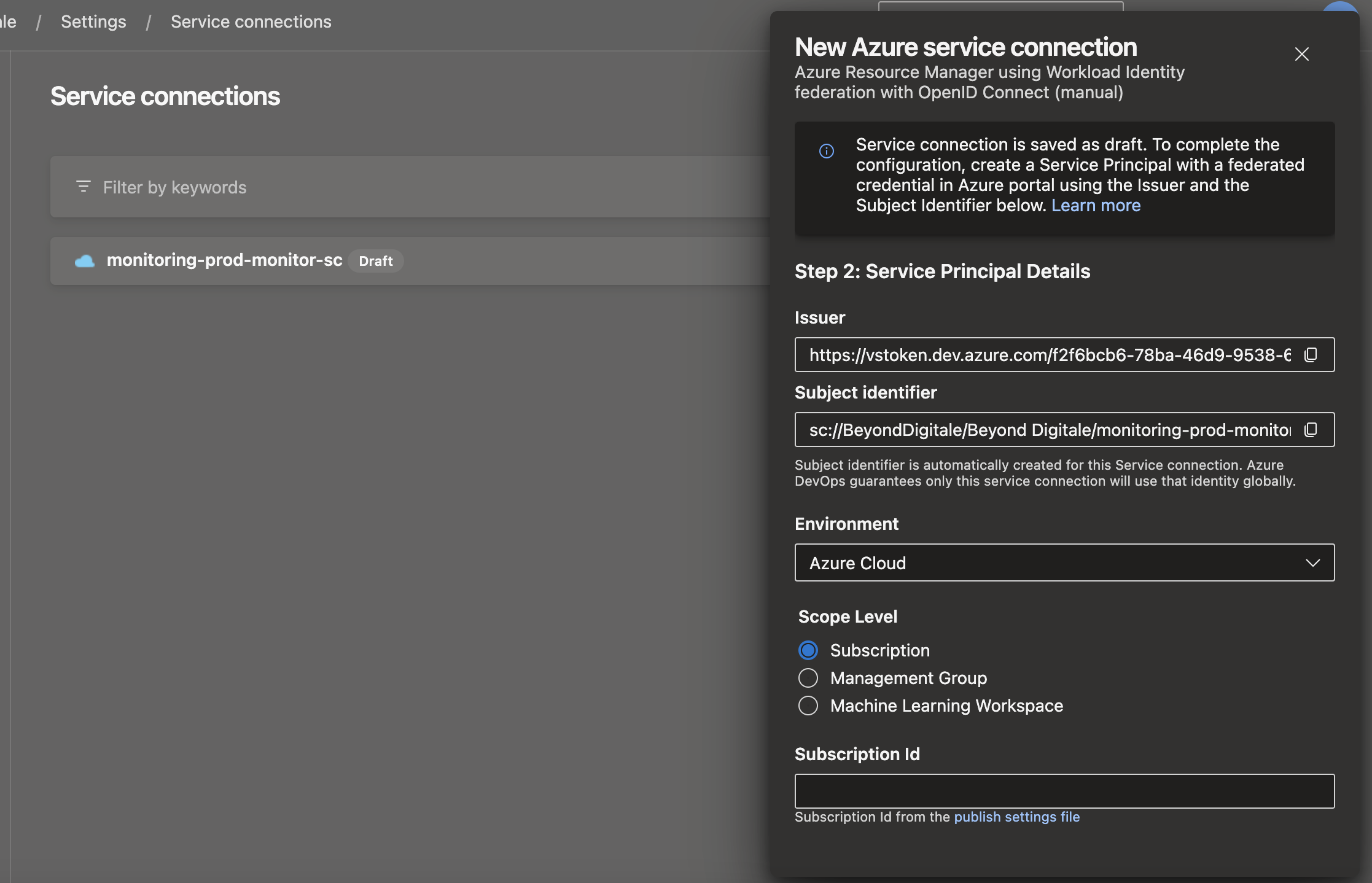
App registration and federated credentials creation
Now we have those 2 informations from Azure DevOps service connection Issuer and Subject identifier, we can create our app registration and federation credentials and we will need to use them up there. Inside Azure Entra ID/ App registrations/ New registration You register the application, you can set the name depending on your convention name of your organisation, I will go for : platform-scope-appNAme-env Once App registration created, you can grant permission needed to it. Go to the wanted resource for example resource groupe and select the Acess Control (IAM), then attirube a role for example reader or contributor of the resource. Once the app registration created and role is granted, you can go to the Certificates & secrets part and select Federated credentials tab, then Add credential. Select other Issuer.
Select other Issuer. Here you will need the Azure DevOps inforamtion of issuer, copy and paste ! Using those information Microsoft Entra ID will be able to validate the connection.

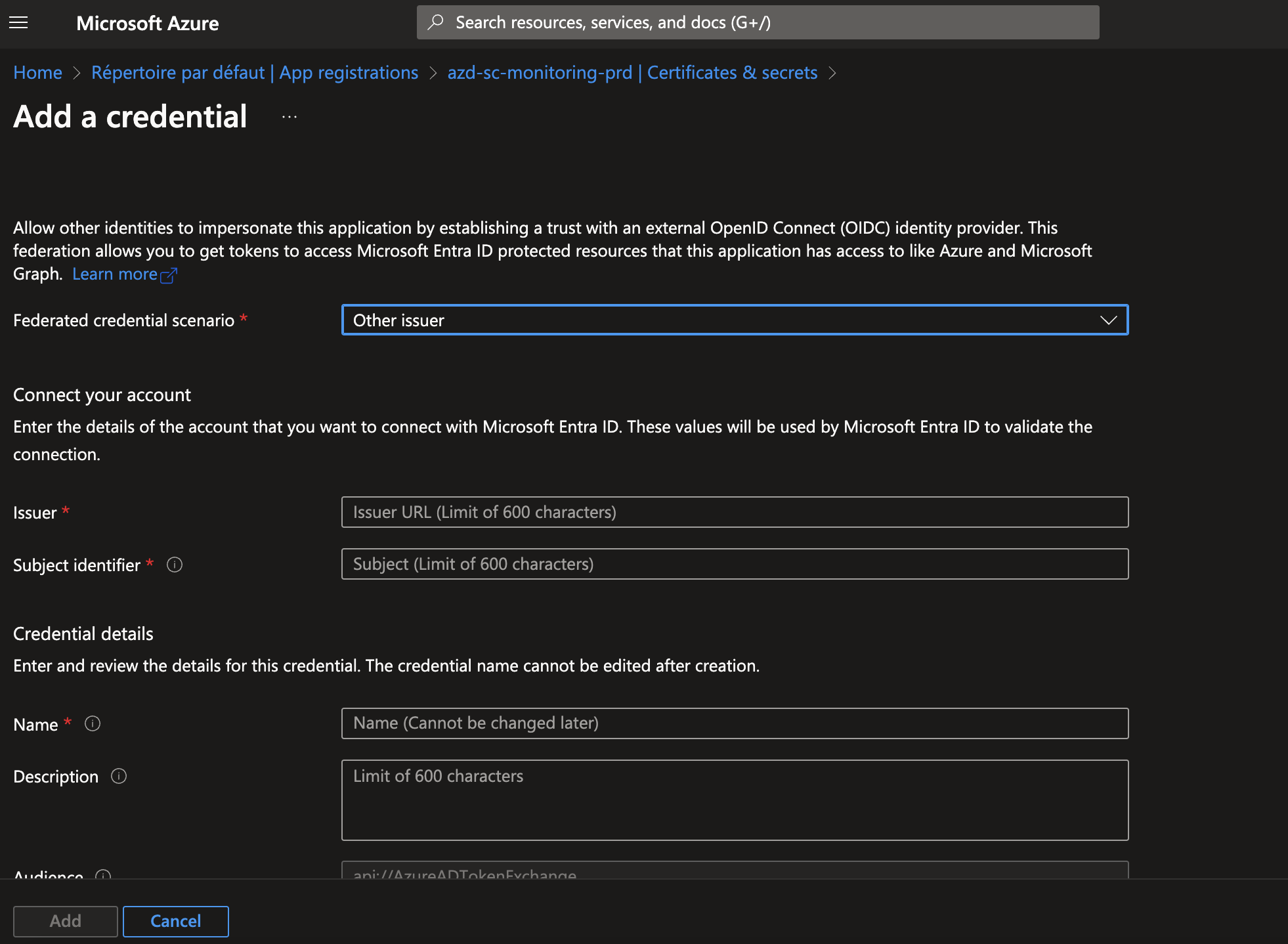 Then, enter the credential name and some description to have quick comprehension of the credential and hit Add button.
Finally you get back to Azure DevOps Side to fill last inforamtion needed.
Then, enter the credential name and some description to have quick comprehension of the credential and hit Add button.
Finally you get back to Azure DevOps Side to fill last inforamtion needed.
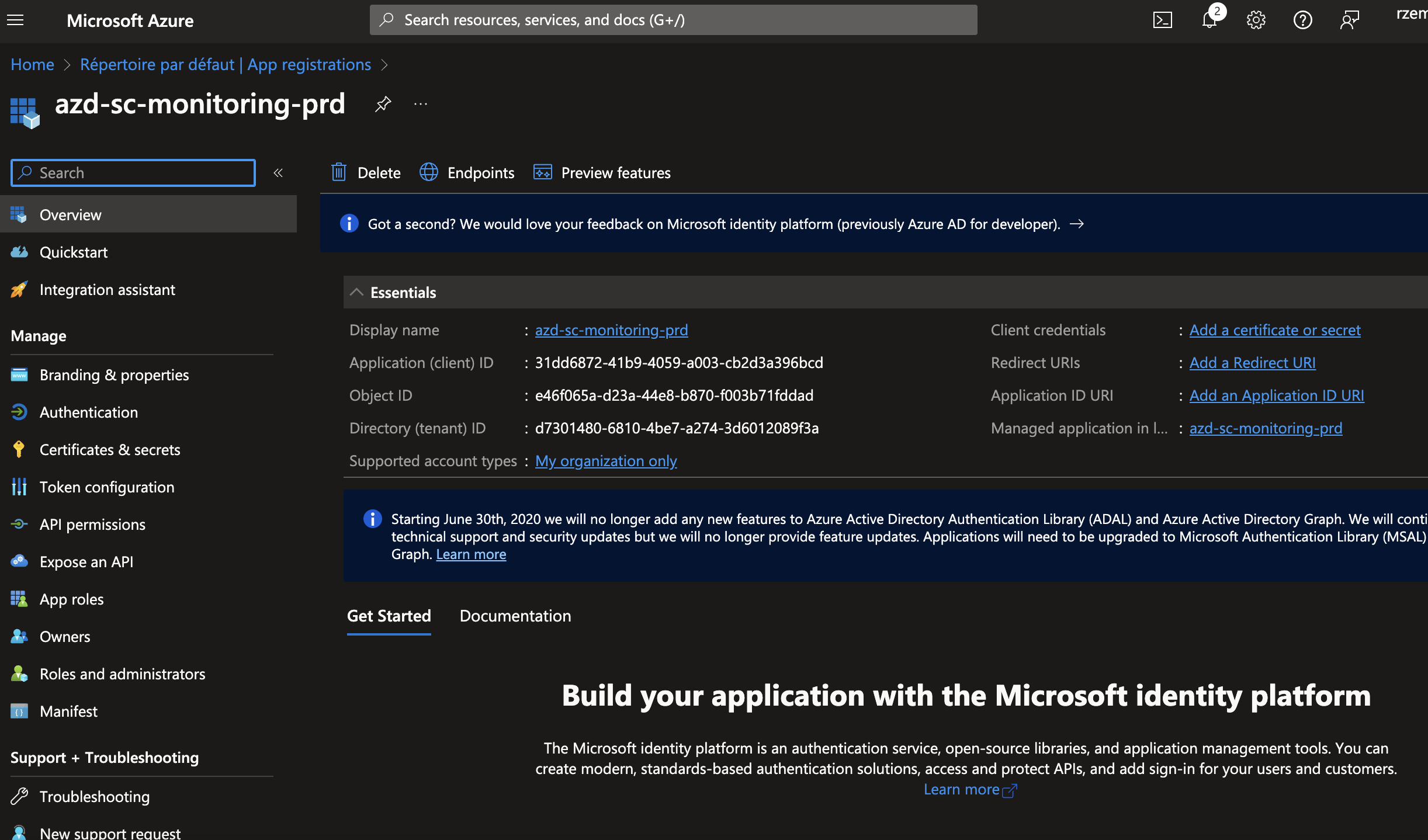 Service Principal Id (App/ client ID) and Tenant/ Directory ID which you get them from your App registration overview.
Service Principal Id (App/ client ID) and Tenant/ Directory ID which you get them from your App registration overview.
 And hit verify and save.
And hit verify and save.
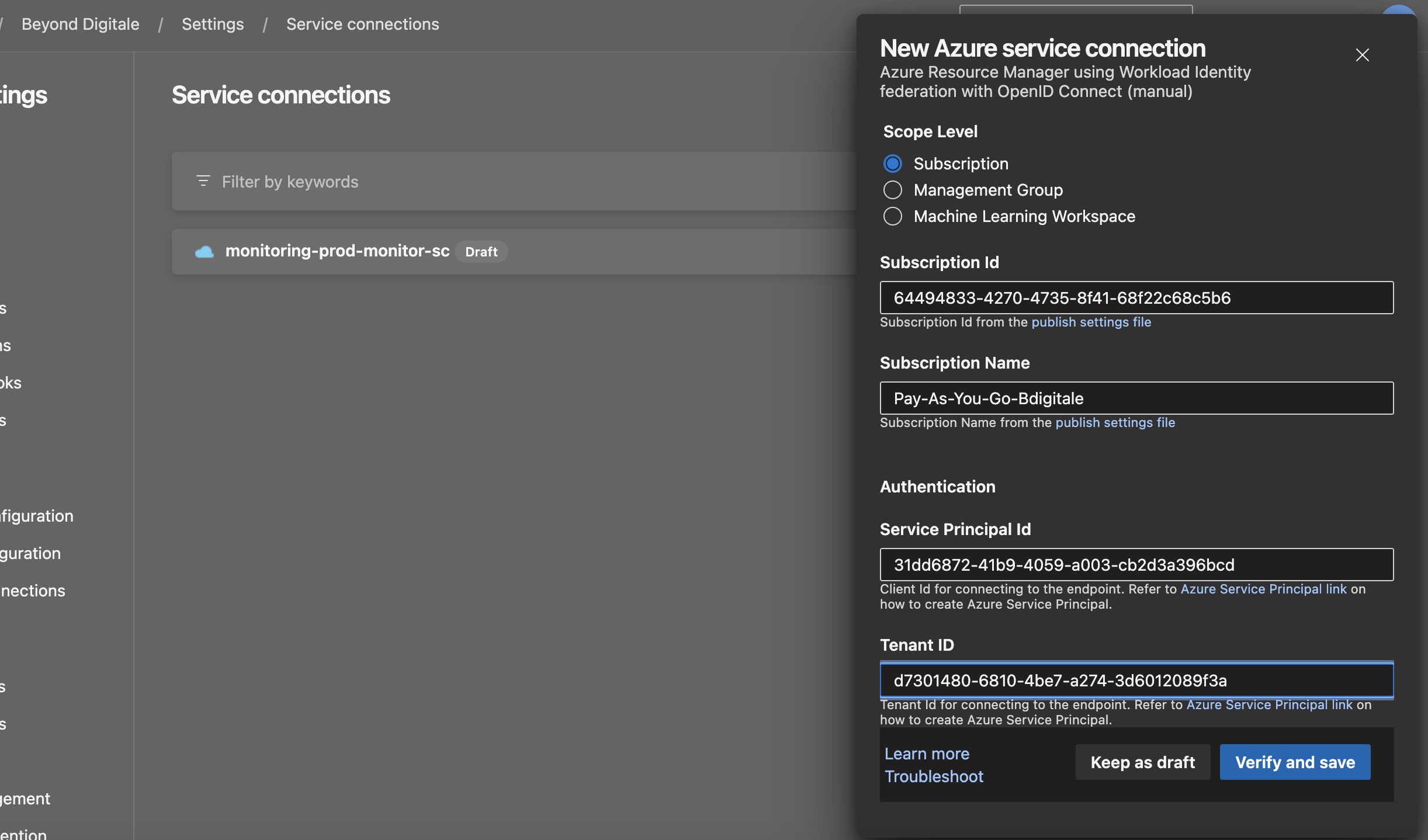
Conclusion:
In conclusion, use the federation manual with Azure DevOps is recommended, when there is lack of permission otherwise you can do the same automatically as explained on the previsous article. Anyway Federation impove workflows and garantie security and effecience of projects.official Microsoft documentation.

